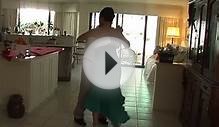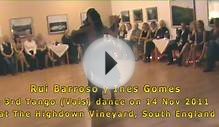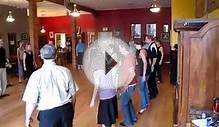
Starting Tango Vals (Tango Waltz) with
Kelly Ray & Lesley Mitchell (Philadelphia, Pa.) The training of moving Tango measures into the fast waltzes that were composed alongside Tango in Argentina inside 1930s through 1950s is a relatively current development in Argentine Tango. The result is a quick, smooth dance that joins the seductive and rhythmic tunes of waltz on complexities of Tango.
Tango Vals uses very nearly the same vocabulary as Tango, the largest distinction maybe becoming that as a result towards music the dancers have a tendency to choose more turning tips, and choose not to pause while they frequently do in Tango.
So, just how can we simply take Tango, a 4/4 time party and fit it to 3/4 time waltz songs? Most of the waltz music used in this way is quick enough so going on all 3 beats each and every measure is exhausting. One preferred and comfortable option would be to move just once per waltz measure, from the accented beat 1 of 3;
Step-on 1, no step on two or three, step on 1, no step-on two or three, etc. Syncopated action habits in Tango and Tango Vals: In Argentine Tango it is extremely typical to maneuver faster as compared to normal cadence by just double-timing, or stepping two times per 2 beats of music as opposed to the more fundamental once per 2 music. This rehearse is commonly described by performers as syncopating. Syncopating tips is also popular in Tango Vals. It is achieved by stepping on a single or another associated with two unaccented beats when you look at the measure with the very first beat, for instance on 1 and 3, or on 1 and 2. the next thing either in of those situations will be on 1 of the next measure, so your pattern of actions over two steps of 3 music each becomes: step-on 1, no step-on 2, step on 3, step-on 1, no step on 2 or 3. we are going to refer to this rhythm design as 1, 3, 1 or Step on 1, step-on 2, no step-on 3, step-on 1, no step on 2 or 3, which we will refer to as 1, 2, 1You will see numerous cases of these numerous rhythm patterns when you look at the numbers, and you may note that the step on the unaccented beat (two or three) is frequently a shorter help size, landing alongside or perhaps beyond the previous step.
Though some dancers never syncopate, going on only beat one of the measure, the reverse is certainly not true. No one syncopates every measure in Vals. The syncopations are periodic individual expressions associated with music and they are always along with some sluggish tips.
a quicker, more challenging, and less typical rhythm pattern is a run of four actions over two actions: 1, 2, 3, 1, holding matters 2 & 3 of second measure. We will not utilize this design in the beginning degree numbers.
RELATED VIDEO












